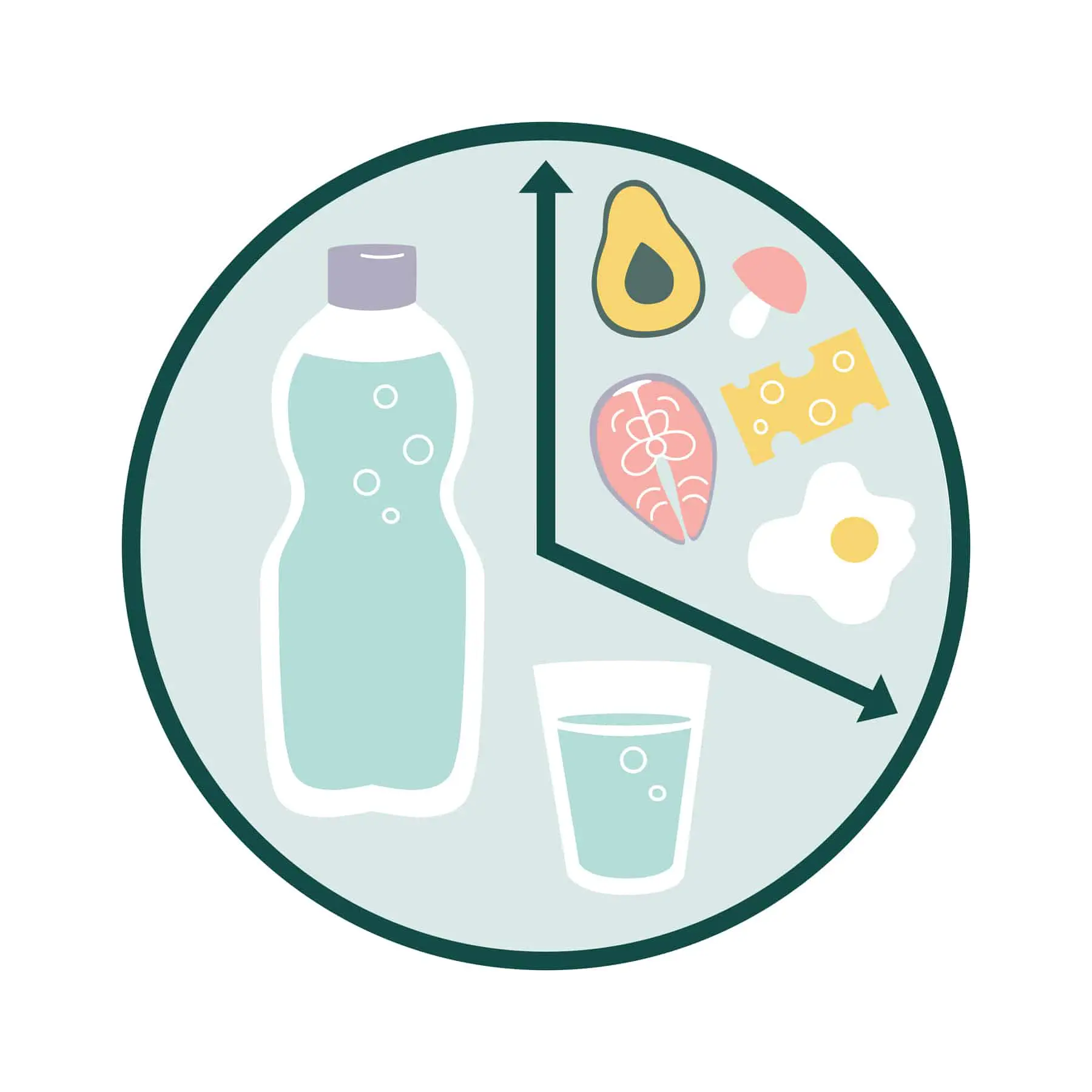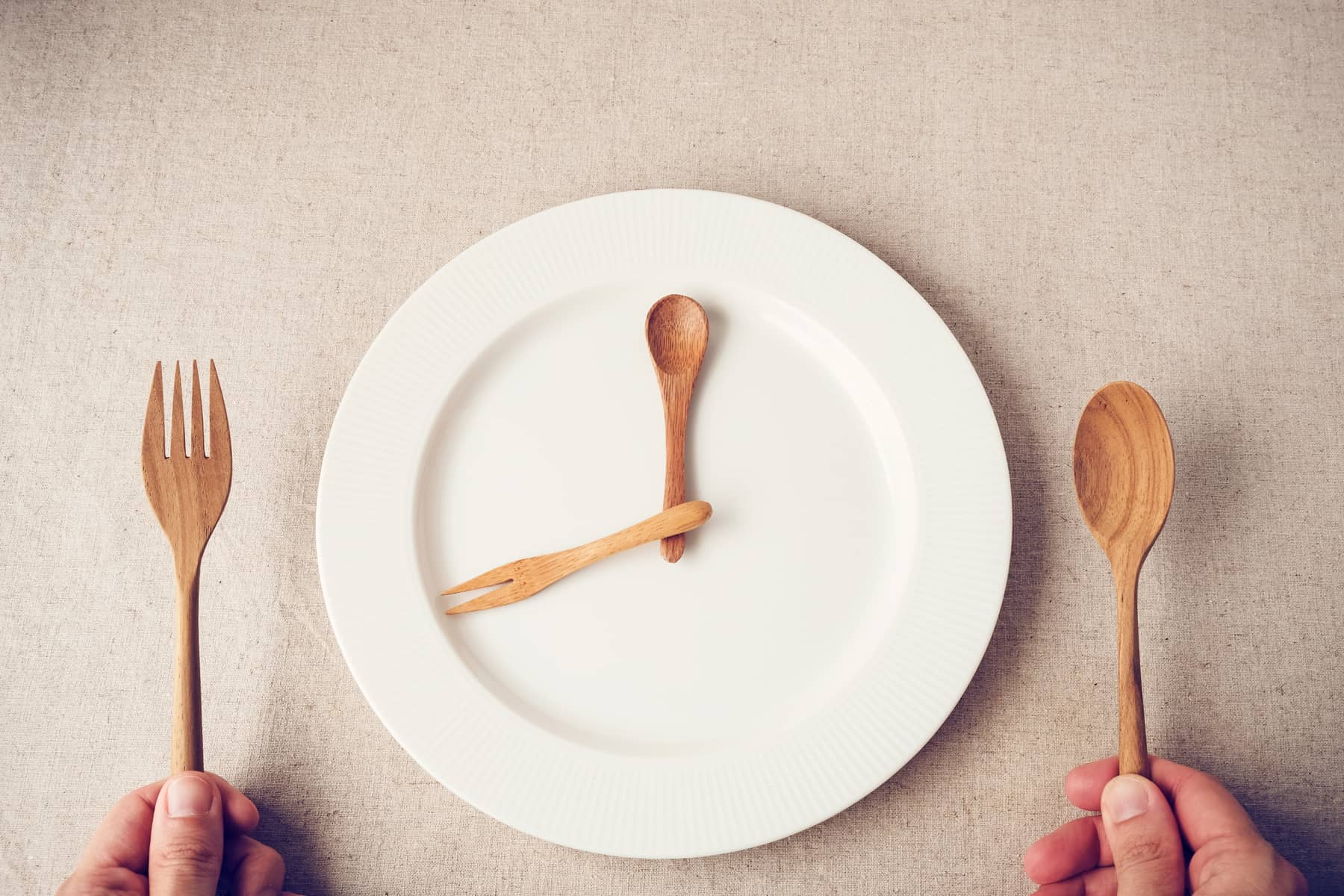By Christina Shepherd McGuire
—
I don’t do restricted eating.
I’ve tried springtime cleanses and detoxes only to end up feeling worse coming out then I did going in. I’ve dabbled in a three-day juice fast, which led to a migraine so bad that I had to break the fast with several days of Advil. Hardcore cleanses don’t work for me or my body, and restricting food groups, like carbs, fats, and dairy, only leads to disrupted hormones and tapped adrenals, in my experience. (I do recognize that not everyone has this occurrence, however.)
Last spring, I was introduced to a process called “rhythmic eating” by Cate Stillman, author and founder of yogahealer.com, an online community for people committed to upleveling their health and life goals. I enrolled in Cate’s Intermittent Fasting Course, which starts by outlining the science behind fasting and helps you discover your goals, find out your metabolic type, and experiment with rhythmic eating.
For those who need a quick crash course: Intermittent fasting (aka, “time-restricted eating”) typically involves fasting for at least twelve hours in a twenty-four-hour day. That means, you only consume water, unsweetened black coffee, and tea during your fasting window, and then you eat a healthy, balanced diet during your eating window.
A popular weight loss regimen, called the “16/8 method,” involves fasting for sixteen hours and eating for only eight. Others swear by “alternate-day fasting,” where you fast for a whole day, and then eat whatever you want the following day, followed by a day of fasting, and so forth. Some intermittent fasting protocols are more rigorous than others, and most center around dropping weight.
Cate’s course, however, is a far cry from the intermittent fasting challenges used by bodybuilders in the “cutting” phase (the fat-loss stage) of their training. Her course approaches fasting, or rhythmic eating, from an Ayurvedic perspective and acknowledges the fact that people have different body types and metabolisms, and that this type of health strategy isn’t a one-size-fits-all endeavor.

In her book, Uninflamed: 21 Anti-Inflammatory PRIMAL HABITS to heal, sleep better, intermittent fast, detox, lose weight, feel great, & crush your life goals with a kickass microbiome, Cate explains her personal journey:
A roll of flab molded around my middle.
I was 40, a mom to a five-year-old, an Ayurvedic practitioner, yoga studio owner, and CEO of Yogahealer with a small team and a big mission. I was also a very athletic biker, skier, surfer, who never missed a day of action.
While I could drop the roll during my seasonal detox, (which I lead at yogidetox.com), it would creep back a month later. I was thinking about food too much.
I justified snacking and emotional eating as my way of dealing with stress. But I wanted off the merry-go-round. I knew where the negative stressor spiral went—weight creep through your 40s leading to brain fog and hot flashes with menopause. No thanks, I’ll pass.
I didn’t want to think about food.
I wanted to be smarter, more focused as a CEO. I wanted more brain capacity, memory, cognitive and emotional plasticity. I’d heard about intermittent fasting.
My husband and I went with skipping breakfast, and being done eating earlier. We bought less, shopped less, prepped, and cleaned up less. We gained peace of mind and savvy taste buds. Cravings for cheap carbs and pastries dissipated. We wasted less time, food, and energy around eating.
The roll rolled away.
While Cate’s initial motivator, like others’, was weight loss, her modern approach to rhythmic eating doesn’t solely focus on this “side effect.” In her course, she first walks you through the three body constitutions (doshas) recognized by Ayurveda: vata (wind), pitta (fire), and kapha (earth). She explains that each dosha tends towards different imbalances: vata types may experience constipation, bloating, and irregularity; pitta types have fast metabolisms and may suffer from heartburn or dehydration; and kapha types have slower metabolisms and may easily hold excess bodyweight.
She recommends approaching your rhythmic eating journey based on your constitution. Vata and pitta types may benefit more from a 14/10 fast-feed cycle, and should eat at least one meal at the very same time every day. Cate says that pushing straight into a 16/8 pattern for vata and pitta types could send them further out of whack, whereas a slower transition, with a wider eating window, may really help imbalances.
Kapha types have an easier time with the 16/8 cycle, and may even find they thrive on more of an 18/6 cycle, with only one to two meals a day, Cate explains. This type of patterning allows kapha bodies the time to digest excess weight, which, in turn, may equate to more energy and endurance.
Cate says it’s important to shift into rhythmic eating in a way that’s “deeply cooperating with your constitution” and that, when done with this level of awareness, you can slowly start to ease into your optimal eating window based on how your body is feeling. She recommends paying attention to your true hunger and satiation, and to set an intention to be flexible in the process. Flexibility allows you to fine-tune what works for you, and it doesn’t lock you into a rigid program that’s not sustainable.

Unlike fad diet programs, Cate’s process helps you realize that what you eat is just as—if not more—important as when you eat. I’m primarily a vata constitution, so I make sure I include grounding foods in my diet, like avocados, olives, salmon, nuts, almond butter, and cheese. In her book, Cate stresses the concept of “adding in, not taking out,” and suggests:
Add in more water.
As you eat less frequently, add in better food. Add in better fats: olives, avocado, sprouted almonds, cashews; or nut butters: tahini, coconut, or cacao. Make dressings and sauces with fresh, high-quality, organic, cold-pressed oils and animal fats like butter, ghee, or beef tallow.
If you’re an omnivore, buy organic whole birds, such as chickens or turkeys, and use the skin and bones to make broth. The fat in the skin and marrow is deeply soothing to the nerves and decreases emotional food cravings for sweets, pastries, and artificial foods. Chew on high fiber, nutrient-dense foods.
She also notes you can “keep the caffeine,” which I know from experience is a huge benefit for those who love their daily cup of Joe. Cate writes:
Caffeine aids in the transition to the fasting habit by suppressing appetite. With strong hunger or intense cravings, use butter coffee [aka, “bulletproof coffee”], not cream or sugar.
So—after all that—why, aside from weight loss, would anyone want to intermittent fast anyway?
Well, for me, and as clearly stated in the title of Cate’s book, I wanted to decrease inflammation in my body. I aimed to relieve my tendinitis and digestive issues, and strived for a clearer mind, more energy, and better endurance to do life.
And this is where rhythmic eating gets a little sciencey. In Cate’s book, she explains:
Frequent eating causes blood sugar to continually spike. Fat cells get the signal from insulin to enlarge rather than release. As white fat accumulates beyond the body’s needs, stagnant adipose tissue (or fat cells) secrete proinflammatory hormones, cytokines, and chemokines, which are cell signaling proteins that signal the inflammatory response from the immune system.
Intermittent fasting gives your system a break from constantly digesting, and creates a unique process in the body called autophagy. Cate writes:
With fasting, cells enter autophagy, which repairs and down-regulates systemic inflammation … Cells respond to fasting by engaging in a coordinated adaptive stress response that leads to increased expression of antioxidant defenses, DNA repair, protein quality control, and mitochondrial biogenesis. This turns back the clock on aging markers.
In layman’s terms, autophagy is basically a form of “self-eating,” says Cate in her book. When the body is given the time and space, it completes a massive cleanup of damaged cells, dormant viruses, and “unwanted stuff.”
But, the kicker is…, Cate writes. Autophagy only happens when you pulse stored energy from the fat back into the blood.
And the only way to get there is through fasting.
Unlike fad diet programs, Cate’s process [of rhythmic eating] helps you realize that what you eat is just as—if not more—important as when you eat.
As I write this, I am now on week three of my spring rhythmic eating journey. This time around, I haven’t dumped a bunch of weight like I did the first time, but I’m still noting the benefits and can already see a difference in the mirror.
I’m a fan of my morning bulletproof decaf coffee, complete with two tablespoons of grass-fed butter. It gets me through my workout, and the added fat actually counteracts the caffeine and induces a sense of calm. (Not lying!) I find that two large meals—complete with all of the food groups—and one healthy snack get me through the day energized and without the afternoon slump. My sleep, mental alertness, and joint inflammation has all improved, and my vata body type is pacified by the grounding that comes with a specified eating schedule.
But best of all, rhythmic eating has finally introduced me to a “cleansing” habit that not only gets the winter gunk out, but is also sustainable for me—without headaches, without cravings, and without restrictive dieting. It’s a habit that I turn to when my body feels a little “off” from overindulgence, and it’s a practice that I’ll call on time and again when I feel the need to take out the trash.
*For more information, visit yogahealer.com, or grab a copy of Cate’s book (referenced above) online through Amazon.

